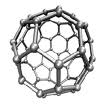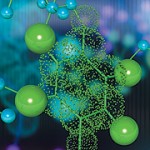It’s a busy time for potential regulators of nanomaterials. This post will point to some of the recent activities, in the United States and abroad.
The Organization for Economic Cooperation and Development’s (OECD) Cooperative Chemical Assessment Program (CoCAP) has long been working to assess the hazards of chemicals across international lines. OECD has now decided that CoCAP has served its purpose and must be replaced by a different organization at the end of 2014. One reason for the change is that the activities of the EU’s REACH program and research in the United States have become the primary assessment mechanisms, rendering CoCAP’s current activities unnecessary. The new program is still in the planning stages, but will involve the development and implementation of new methodologies.
This sounds like progress. As this blog often has noted, nanotechnology assessment has received more attention in the international arena than in the United States, and this is another example of an international organization moving forward.
A summary of CoCAP may be accessed at:
http://www.oecd.org/env/ehs/risk-assessment/oecdcooperativechemicalsassessmentprogramme.htm
A report of the announcement to replace CoCAP appeared in
Rick Mitchell, Multi-Nation Group to Replace Program That Weighs High-Volume Chemical Hazards, 28 Toxics L. Rep. (BNA) 707 (June 27, 2013) (by subscription)
Speaking of the EU, the European Commission is seeking suggestions on better applying the REACH assessment to nanomaterials. The official document seeking comments states:
“Specifically, the policy initiative shall provide clearer REACH requirements for nanomaterials to ensure that industry demonstrates safe use in the registration dossiers in accordance with the aims of REACH Article 1(1) ‘to ensure a high level of protection of human health and the environment, including the promotion of alternative methods for assessment of hazards of substance, as well as the free circulation of substances on theinternal market while enhancing competitiveness and innovation’.”
The Commission is reaching out to all interested stakeholders to provide “the best possible evidence base for its work.”
The official announcement, with information on submitting comments, is available at:
http://ec.europa.eu/environment/consultations/nanomaterials_2013_en.htm
In another demonstration of international cooperation, the United States and Canada have developed a uniform classification system for industrial nanomaterials. The U.S.-Canada Regulatory Cooperation Council’s (RCC) working group has been involved in this process since 2011 as part of a broader initiative to bring about uniformity in addressing nanotechnology. This latest step is part of a continuing process. This blog has previously discussed the work of the RCC here.
Here in the United States, EPA has issued its final significant new use rules (SNURs) for 17 substances, mostly constituting substances at the nanoscale, which will go into effect on August 26, 2013. Fifteen of the seventeen SNURs are based upon TSCA section 5(e) consent orders issued by EPA and reflect the substance of the orders. With regard to the other two SNURs, “EPA determined that one or more of the criteria of concern . . . were met.” (Final Rule, p. 6) In the Final Rule, EPA responded to various comments, including those directed at workplace safety. This blog will address those comments at a later date.
The Final Rule is available at:





 In my most recent entry
In my most recent entry The National Academies have promised a report by the end of January 2012 on priorities (both short- and long-term) for studying the health, safety, and environmental effects of nanotechnology. According to the National Academies, this report will address the following matters: the properties of engineered nanomaterials; methods and technologies for “detecting, measuring, analyzing, and monitoring” engineered nanomaterials; what studies are needed; what testing methods need to be developed; the models for predicting impacts that should be developed; research priorities; and the criteria for evaluating research progress. In its “Statement of Task,” the National Research Council has explained:
The National Academies have promised a report by the end of January 2012 on priorities (both short- and long-term) for studying the health, safety, and environmental effects of nanotechnology. According to the National Academies, this report will address the following matters: the properties of engineered nanomaterials; methods and technologies for “detecting, measuring, analyzing, and monitoring” engineered nanomaterials; what studies are needed; what testing methods need to be developed; the models for predicting impacts that should be developed; research priorities; and the criteria for evaluating research progress. In its “Statement of Task,” the National Research Council has explained: An interesting and potentially revolutionary development in magnetic storage of data was announced a couple of weeks ago. Researchers at I.B.M. have reported the development of a new class of nanomaterials that could lead to the development of new, significantly smaller memory chips and disk drives that will both hold vast amounts of information and use less power than the current class of silicon chips. The report (Loth, Baumann, Lutz, Eigler, and Heinrich, Bistability in Atomic-Scale Antiferromagnets) appears in the journal Science at Vol. 335, no. 6065, pp. 196-99 (Jan. 13, 2012), and has been widely reported in the news media. There is much excitement over this development, both for its inherent promise for data storage and for its potential in other areas. Analysts have suggested that other new nanomaterials may be forthcoming using some of the same general methodologies and approaches of these researchers.
An interesting and potentially revolutionary development in magnetic storage of data was announced a couple of weeks ago. Researchers at I.B.M. have reported the development of a new class of nanomaterials that could lead to the development of new, significantly smaller memory chips and disk drives that will both hold vast amounts of information and use less power than the current class of silicon chips. The report (Loth, Baumann, Lutz, Eigler, and Heinrich, Bistability in Atomic-Scale Antiferromagnets) appears in the journal Science at Vol. 335, no. 6065, pp. 196-99 (Jan. 13, 2012), and has been widely reported in the news media. There is much excitement over this development, both for its inherent promise for data storage and for its potential in other areas. Analysts have suggested that other new nanomaterials may be forthcoming using some of the same general methodologies and approaches of these researchers. It had to happen sooner or later. And it’s happening now. A coalition of nonprofit consumer safety and environmental groups brought an action on December 21 in federal district court in California against the Food and Drug Administration (FDA). The action seeks an order for declaratory and injunctive relief under the Administrative Procedure Act to require the FDA to respond to a petition filed with the FDA in 2006 which sought action by the agency to assure the safety of the public exposed to nanomaterials, particularly sunscreen products. The requested relief is detailed on pages 3-4 of the petition. The lawsuit is International Center for Technology Assessment v. Hamburg (N.D. Calif., CV 11-6592).
It had to happen sooner or later. And it’s happening now. A coalition of nonprofit consumer safety and environmental groups brought an action on December 21 in federal district court in California against the Food and Drug Administration (FDA). The action seeks an order for declaratory and injunctive relief under the Administrative Procedure Act to require the FDA to respond to a petition filed with the FDA in 2006 which sought action by the agency to assure the safety of the public exposed to nanomaterials, particularly sunscreen products. The requested relief is detailed on pages 3-4 of the petition. The lawsuit is International Center for Technology Assessment v. Hamburg (N.D. Calif., CV 11-6592). The National Institute of Standards and Technology (NIST) has issued what is being touted as the world’s first reference material for single-wall carbon nanotube soot. In its statement, NIST calls single-wall carbon nanotubes (SWCNT) “perhaps the archetype of all nanoscale materials.” The promise of SWCNT in industrial use is great (NIST chemical engineer Jeffrey Fagan stated that “full development of these materials should enable lighter, stronger materials, as well as improve many technologies from sensors to electronics and batteries”). But as with most things, there’s a catch.
The National Institute of Standards and Technology (NIST) has issued what is being touted as the world’s first reference material for single-wall carbon nanotube soot. In its statement, NIST calls single-wall carbon nanotubes (SWCNT) “perhaps the archetype of all nanoscale materials.” The promise of SWCNT in industrial use is great (NIST chemical engineer Jeffrey Fagan stated that “full development of these materials should enable lighter, stronger materials, as well as improve many technologies from sensors to electronics and batteries”). But as with most things, there’s a catch.